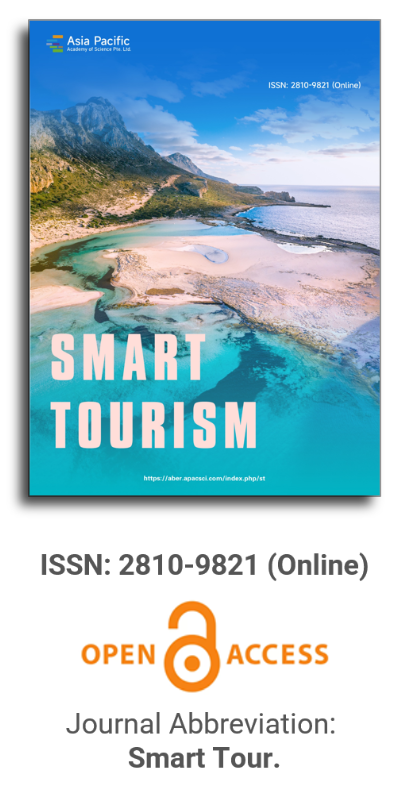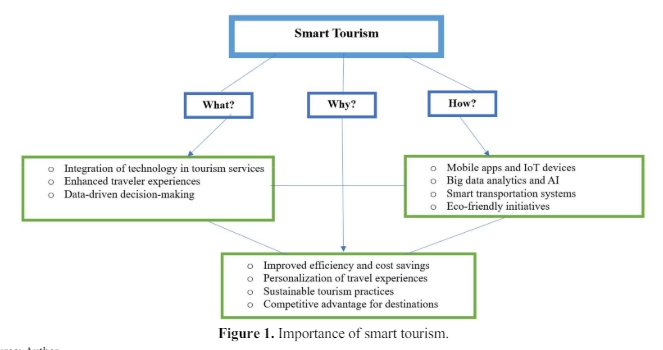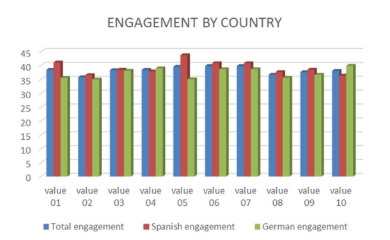
Publication Frequency
Semi-annual
Journal Articles
Search
Search scope
Volume Arrangement
Featured Articles

This commentary critically examines the integration of smart tourism technologies within the tourism and hospitality sectors, focusing on their role in enhancing tourist experiences and operational efficiencies. Through a multidisciplinary approach encompassing a literature review, case studies, and empirical data analysis, the analysis adopts a constructivist perspective to explore tourists’ subjective experiences with technology. It highlights significant personalization, efficiency, and sustainability advancements while acknowledging challenges related to digital infrastructure and privacy concerns. Advocating for a balanced and sustainable approach that respects environmental integrity and cultural heritage, the commentary concludes with recommendations for future research on the socio-economic impacts of smart tourism, ethical data usage, and the adaptation of technologies to diverse contexts. It calls for increased investment in digital infrastructure and stakeholder collaborative efforts to promote sustainable and inclusive tourism development.

The importance of the image of the tourist destination in the communication and marketing of a tourist destination is beyond doubt. For this reason, numerous studies address these issues. However, not so many do so from the perspective of the emotion the receiver feels, which is why this study deals with analyzing the emotion generated in the receiver through neuromarketing techniques and measuring the level of engagement felt. As a fundamental part of this study, we added the variable of cultural differences, both generically and specifically for gender and age. We are mainly guided by the theories of Life Cycle Theory and Generational Theory to analyze age differences. At the same time, gender differences are approached from the Gender Role Theory. The sample comprises one hundred individuals with apparent cultural differences, one sample of German origin and residence and the other of Spanish origin and residence, 50/50. We approached the study from the point of view of the emotion felt by the receiver of the message based on ten neuromarketing techniques (EGG) and ten images used by a famous tourist destination known in both countries. The results suggest that not only are there differences in the emotion felt after viewing images of a tourist destination, but that these differences are also explained by cultural background, gender, and age.
Application of new technologies on tourism development in the context of big data
Article ID: 1630
Vol 2, Issue 2, 2021
DOI: https://doi.org/10.54517/st.v2i2.1630
Vol 2, Issue 2, 2021
Received: 21 May 2021; Accepted: 27 June2021; Available online: 13 July 2021; Issue release: 30 October 2021
Download PDF
Abstract
In order to cope with the pressure and challenges brought by the growing number of tourists in China, the development of big data and related electronic information technology provides new opportunities for the operation and management of scenic spots. On the premise of analyzing the relevant background of big data, the advantages of the application of big data in the management of tourist attractions, tourism marketing, tourism operation status and the shaping of tourist reputation are proposed, which provides technical support, data support and intellectual support for the realization of efficient operation, management, analysis, prediction and evaluation of scenic spots. Combining with the application status of big data in the tourism industry, firstly, the paper proposes to establish a data storage and management system based on cloud computing technology, which provides high-performance services for the storage and management of tourism big data. Secondly, it promotes the application of Internet of Things technology in tourism and realizes the intelligent management of tourist attractions. The third is the establishment of the travel information center service platform, for the calculation and processing of data, massive high data access and query to provide a guarantee. The fourth is the establishment of a protection system for tourism data security through active defense, physical isolation and other technical means to provide multi-level and all-round protection for tourism data security.
Keywords
tourism industry; big data; cloud computing; the Internet of things; information security
References
- Li G, Cheng X. Big data research: The future of science and technology and economic and social development of the major battle field—The research status and scientific thinking of Big Data. Proceedings of the Chinese Academy of Sciences 2012; 27(6): 647–657.
- Wang R. The analysis on development status and future trend of security and defense management platform. China Public Safety 2015; (Z1): 109–112.
- Li J. Research on network marketing strategy based on Big Data precision marketing. Journal of Commercial Economics 2017; (11): 46–47.
- Zhang Y, Li B, Lu H. Sample-specific SVM learning for person-identification. 2016 IEEE Conference on Computer Vision & Pattern Recognition; 2016 Jun 27-30; Las Vegas. New York: IEEE Publications; 2016.
- Wang Y. U-shaped or linear? The research on the influence of service recovery on the word-of-mouth spreading in the context of Internet [Master’s thesis]. Anhui: University of Science and Technology of China; 2016.
- Chen Q, Deng Q. Cloud computing and its key technologies. Journal of Computer Applications 2009; 29(9): 2562–2567.
- Yu Y. Review of cloud computing research. China Radio 2012; (4): 77–79.
- Chang F, Dean J, Ghemawat S, et al. Bigtable: A distributed storage system for structured data. Transactions on Computer Systems (TOCS) 2008; 26(2): 4–18.
- European Research Projects on the Internet of Things (CERP-IoT), Strategic Research Agenda (SRA). Internet of things-strategic research roadmap [Internet]. 2009 Sep 15. Available from: http://www.internet-of-things-research.eu/pdf/IoT_Cluster_Strategic_Research_Agenda_2009.pdf
- Wu Y. Shepinshibie (RFID) jishuyanjiu xianzhuang ji fazhan zhanwang (Chinese) [The research status and prospects of radio frequency identification technology]. Microcomputer Information 2006; (32): 234–236, 230.
Supporting Agencies
Copyright (c) 2021 Junai Zhang
License URL: https://creativecommons.org/licenses/by/4.0

This site is licensed under a Creative Commons Attribution 4.0 International License (CC BY 4.0).
Editor-in-Chief

Prof. Hung-Che Wu
Nanfang College, Guangzhou
China
Indexing & Archiving
News & Announcements
2025-01-09
A Thank You Letter from Smart Tourism!
As we bid farewell to 2024, we take immense pride in reflecting on the 28 distinguished works that have been meticulously published online following a rigorous peer-review process. We extend our heartfelt gratitude for authors' invaluable contributions, reviewers' steadfast support, and EBM's insightful guidance throughout the year. Your dedication and expertise have been instrumental in propelling Smart Tourism towards its current success.
2024-07-05
Call for Reading: Volume 5 Issue 1 Available
We are pleased to announce the release of Volume 5 Issue 1 of Smart Tourism. We sincerely invite researchers to download and read articles in this issue. It is hopeful that the content will bring readers new perspectives and inspire the research in related field.
2024-01-15
New layout style in 2024
In 2024, Smart Tourism will adopt a new layout style. Please turn to the "Author Guidelines" for preparing your manuscripts.
Journal Center
Asia Pacific Academy of Science Pte. Ltd. (APACSCI) specializes in international journal publishing. APACSCI adopts the open access publishing model and provides an important communication bridge for academic groups whose interest fields include engineering, technology, medicine, computer, mathematics, agriculture and forestry, and environment.



.jpg)
.jpg)

.jpg)

